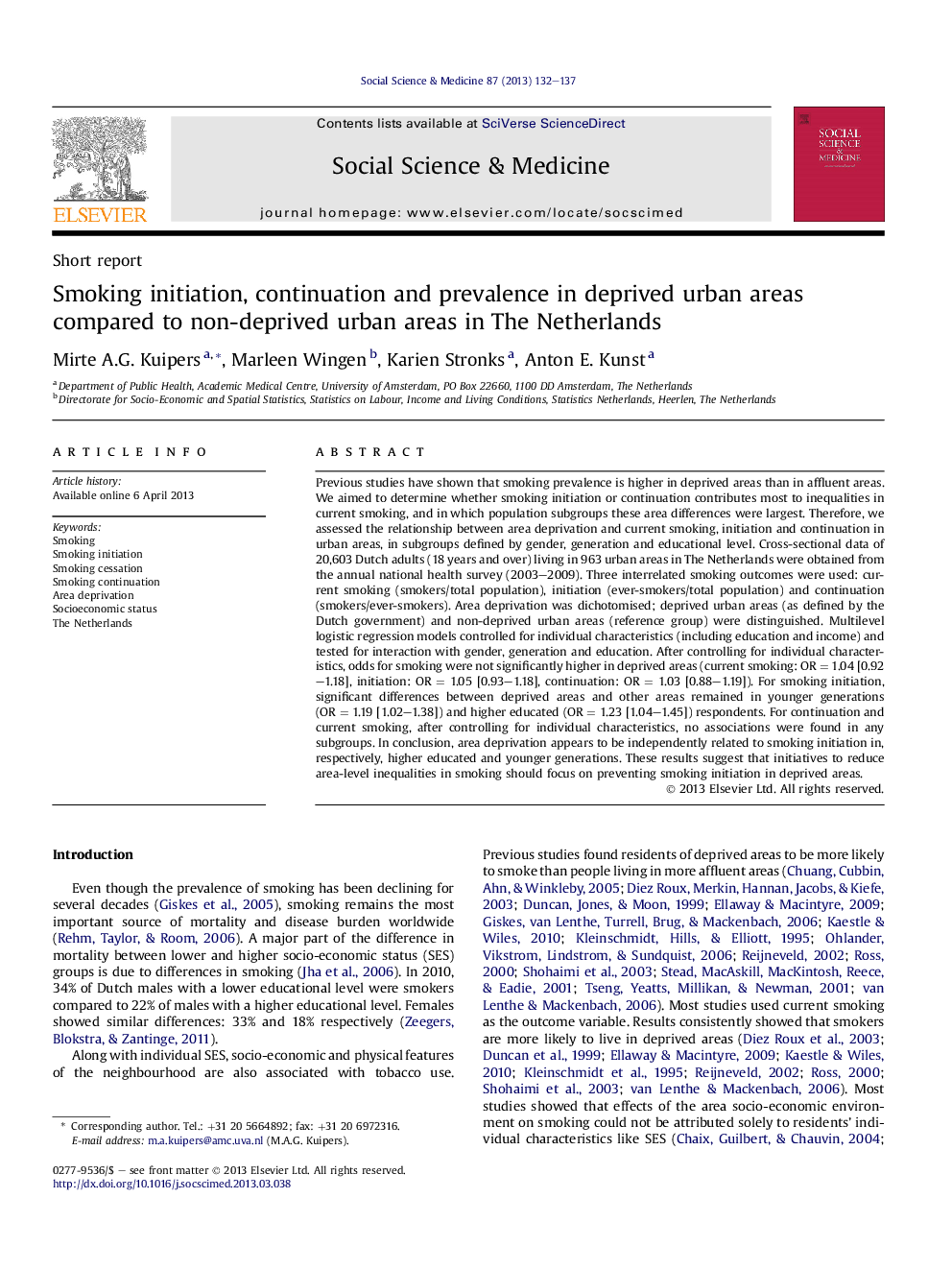| کد مقاله | کد نشریه | سال انتشار | مقاله انگلیسی | نسخه تمام متن |
|---|---|---|---|---|
| 7337600 | 1476081 | 2013 | 6 صفحه PDF | دانلود رایگان |
عنوان انگلیسی مقاله ISI
Smoking initiation, continuation and prevalence in deprived urban areas compared to non-deprived urban areas in The Netherlands
ترجمه فارسی عنوان
شروع، ادامه و شیوع سیگار کشیدن در مناطق شهری محروم در مقایسه با مناطق شهری محروم در هلند
دانلود مقاله + سفارش ترجمه
دانلود مقاله ISI انگلیسی
رایگان برای ایرانیان
کلمات کلیدی
سیگار کشیدن، شروع سیگار، ترک سیگار، سیگار کشیدن ادامه، محرومیت محله، وضعیت اجتماعی و اقتصادی، هلند،
موضوعات مرتبط
علوم پزشکی و سلامت
پزشکی و دندانپزشکی
سیاست های بهداشت و سلامت عمومی
چکیده انگلیسی
Previous studies have shown that smoking prevalence is higher in deprived areas than in affluent areas. We aimed to determine whether smoking initiation or continuation contributes most to inequalities in current smoking, and in which population subgroups these area differences were largest. Therefore, we assessed the relationship between area deprivation and current smoking, initiation and continuation in urban areas, in subgroups defined by gender, generation and educational level. Cross-sectional data of 20,603 Dutch adults (18 years and over) living in 963 urban areas in The Netherlands were obtained from the annual national health survey (2003-2009). Three interrelated smoking outcomes were used: current smoking (smokers/total population), initiation (ever-smokers/total population) and continuation (smokers/ever-smokers). Area deprivation was dichotomised; deprived urban areas (as defined by the Dutch government) and non-deprived urban areas (reference group) were distinguished. Multilevel logistic regression models controlled for individual characteristics (including education and income) and tested for interaction with gender, generation and education. After controlling for individual characteristics, odds for smoking were not significantly higher in deprived areas (current smoking: ORÂ =Â 1.04 [0.92-1.18], initiation: ORÂ =Â 1.05 [0.93-1.18], continuation: ORÂ =Â 1.03 [0.88-1.19]). For smoking initiation, significant differences between deprived areas and other areas remained in younger generations (ORÂ =Â 1.19 [1.02-1.38]) and higher educated (ORÂ =Â 1.23 [1.04-1.45]) respondents. For continuation and current smoking, after controlling for individual characteristics, no associations were found in any subgroups. In conclusion, area deprivation appears to be independently related to smoking initiation in, respectively, higher educated and younger generations. These results suggest that initiatives to reduce area-level inequalities in smoking should focus on preventing smoking initiation in deprived areas.
ناشر
Database: Elsevier - ScienceDirect (ساینس دایرکت)
Journal: Social Science & Medicine - Volume 87, June 2013, Pages 132-137
Journal: Social Science & Medicine - Volume 87, June 2013, Pages 132-137
نویسندگان
Mirte A.G. Kuipers, Marleen Wingen, Karien Stronks, Anton E. Kunst,
